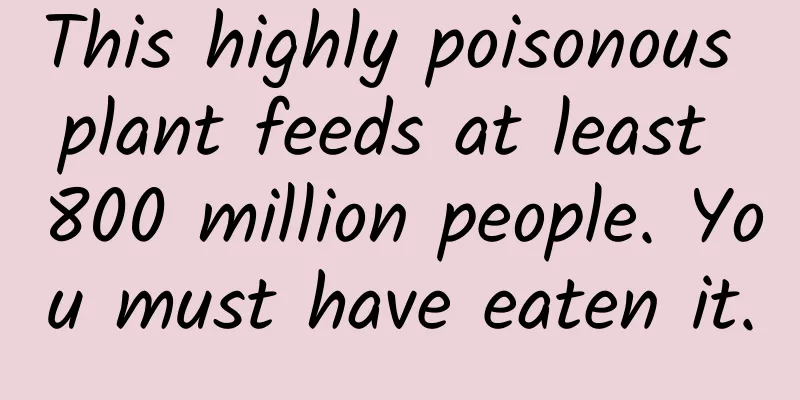Competing for popular "property projects" and abandoning "unfinished buildings", how did hermit crabs become "real estate transaction" tycoons?

|
The hermit crab is small in size, with an appearance between shrimp and crab. It has a long body, which is divided into the cephalothorax and abdomen. Except for the last thoracic segment, the cephalothorax is covered by the cephalothorax. The abdomen is slender and soft, usually asymmetrical, and can mostly curl up in the shell. In order to protect the shell from being stolen, its tail segment has evolved into a hook shape, which can firmly hook the inside of the shell. This structure allows the hermit crab to flexibly adjust its body posture when moving to adapt to shells of different sizes and shapes. Hermit crabs are relatively small and soft, but because of their soft abdomen, they are easily attacked. They can only survive under the protection of hard shells. Therefore, they will look for discarded shells or other hard shells as their "home" to provide physical protection from predation by natural enemies and damage from the environment. These shells not only protect them from predators, but also prevent them from accidental injuries when moving. If they lose their shells, their bodies will become dehydrated, they will be infected with diseases, and they will be more vulnerable to attacks by natural enemies. But no matter how good the shell is, it is not the product of the hermit crab itself and cannot grow as the hermit crab's body grows. For this reason, hermit crabs have to constantly replace their shells throughout their lives. Imagine that hermit crabs are actually experiencing a real estate boom! They are constantly looking for bigger, more comfortable, and more luxurious "houses". Every time a hermit crab finds a new, more suitable shell, it will move in and leave its old shell to its friends who are still worried about their houses. It's like a "house-changing chain" that keeps passing on, and each hermit crab is working hard for its own "property". In the world of hermit crabs, the value of shells is constantly changing. A perfectly shaped and appropriately sized shell may become a popular "property" for hermit crabs to chase after. However, shells that are damaged, deformed, or too small may be abandoned and become "unfinished buildings" that no one cares about. Hermit crabs will also choose a "house" that suits them according to their preferences and needs. When a hermit crab finds a new shell, if the shell it encounters is smaller and more broken than the one on its back, it will leave and abandon it; if it encounters a much larger shell, it will wait patiently beside the large shell until the most suitable hermit crab for the large empty shell appears. This process may gather more than a dozen hermit crabs, who will line up in a row according to size and grab the hermit crab in front with their claws until a large enough hermit crab appears and claims the large empty shell. The old shell replaced by the large hermit crab will be claimed by the hermit crabs in the queue below. By analogy, the hermit crabs in the entire team can complete the shell change in order. Just like humans decorate their houses, some hermit crabs also carefully "decorate" their homes. They secrete corrosive substances to remove some of the intricate skeleton structures inside the shell, making the shell more spacious and smooth. In order to protect their houses, some hermit crabs will also find housekeepers or bodyguards to help them. For example, some hermit crabs living in the sea will carry sea anemones on their backs to travel together. The male sea anemone crab carries the "house" to the door of the female crab for mating. The hands are covered with stinging cells that can secrete venom, and these hermit crabs have anti-toxic substances in their blood, so the sea anemone will not pose a threat to them. In this way, the sea anemone acts as a bodyguard for the hermit crab. Humans like to pick up snail shells on the beach and make them into various ornaments. But few people realize that this pick-up also takes away the homes of hermit crabs, posing a great threat to their survival! In addition, with the worsening of marine pollution, marine garbage is increasing. Hermit crabs sometimes choose plastic fragments, bottle caps and other garbage as their homes. Although these garbage can provide them with certain protection, they are far less stable and safe than snail shells. Plastic garbage may release toxic chemicals, posing a potential threat to the health of hermit crabs. Some plastic fragments may contain plasticizers such as phthalates, which may interfere with the endocrine system of hermit crabs. Marine debris not only affects the shell selection and living environment of hermit crabs, but may also cause damage to the entire ecosystem. Plastic waste may entangle the appendages of hermit crabs, making it impossible for them to move freely and forage for food; at the same time, the garbage may also block the breathing holes or digestive tracts of marine organisms, causing them to suffocate or die. These impacts will further aggravate the imbalance of the ecosystem and the loss of biodiversity. In addition, marine debris may also cause harm to other marine organisms such as marine mammals, fish and birds, forming a vicious cycle that affects the health of the entire marine ecosystem. References: [1]. Zhang Jiaxin. Hermit crabs learn to use garbage as shells for their "home"[J]. Science and Technology Daily. [2]. Animals’ “RV” Travel[J]. Here comes the Nesting Master. [3]. Ma Xiaohui. Hermit crabs - elves living in snail shells [J]. Celebrity talk show. [4]. He Aihua. Hermit crab's "second-hand housing" transaction[J]. Nature Exploration. |
>>: Street hotpot is "going viral", beware of "table bombs"! Safety reminder for gas stoves →
Recommend
Is the blue I see the same blue you see?
The differences in the physical structure of the ...
The core of Double Eleven marketing event promotion planning!
Since 2014, November 11th of every year has becom...
Samsung signs electric vehicle battery contract with Lucid to wash away explosion shame
This cylindrical battery jointly developed by Sam...
How do we know the age of Sanxingdui artifacts since there are no written records?
In recent years, the cultural relics unearthed fr...
Sharing tips on selling products through Douyin: The most comprehensive guide to selling products through short videos!
Many people have this question: "Is it too l...
10 Things iOS Users Can Make Fun of Android for Now
[[131273]] The battle between Android and iOS dev...
How to write a standard event copy?
In an event, you need to use event copy to clearl...
How much does it cost to make the Aral Logistics Mini Program? What is the quotation for the development of the Aral Logistics Mini Program?
How much does it cost to make the Aral Logistics ...
I heard you want to take advantage of the hot spots, think about it after reading this article
Jiuzhaigou was hit by an earthquake. Just when th...
Technology Morning News | Russia plans to build a new anti-missile defense "shield"
【Today’s cover】 On the 23rd, at the Miaoshanzhai ...
"Mom, I'm so tired from work..."
"Mom is so tired from work" Some time a...
The three parties jointly built the Tianjin Automobile Base, and Dong Mingzhu made every step carefully in car manufacturing
Although Gree's acquisition of Zhuhai Yinlong...
After "Yang Kang", don't sit for a long time, four ways to make you "stand up"
In recent days, I believe that many of our "...
Is product homogeneity serious? 4 dimensions to teach you how to break through successfully!
If you are a company that produces cosmetic conta...
Before you read this, you definitely don’t understand what real ASO is.
As everyone knows, ASO refers to the search optim...









